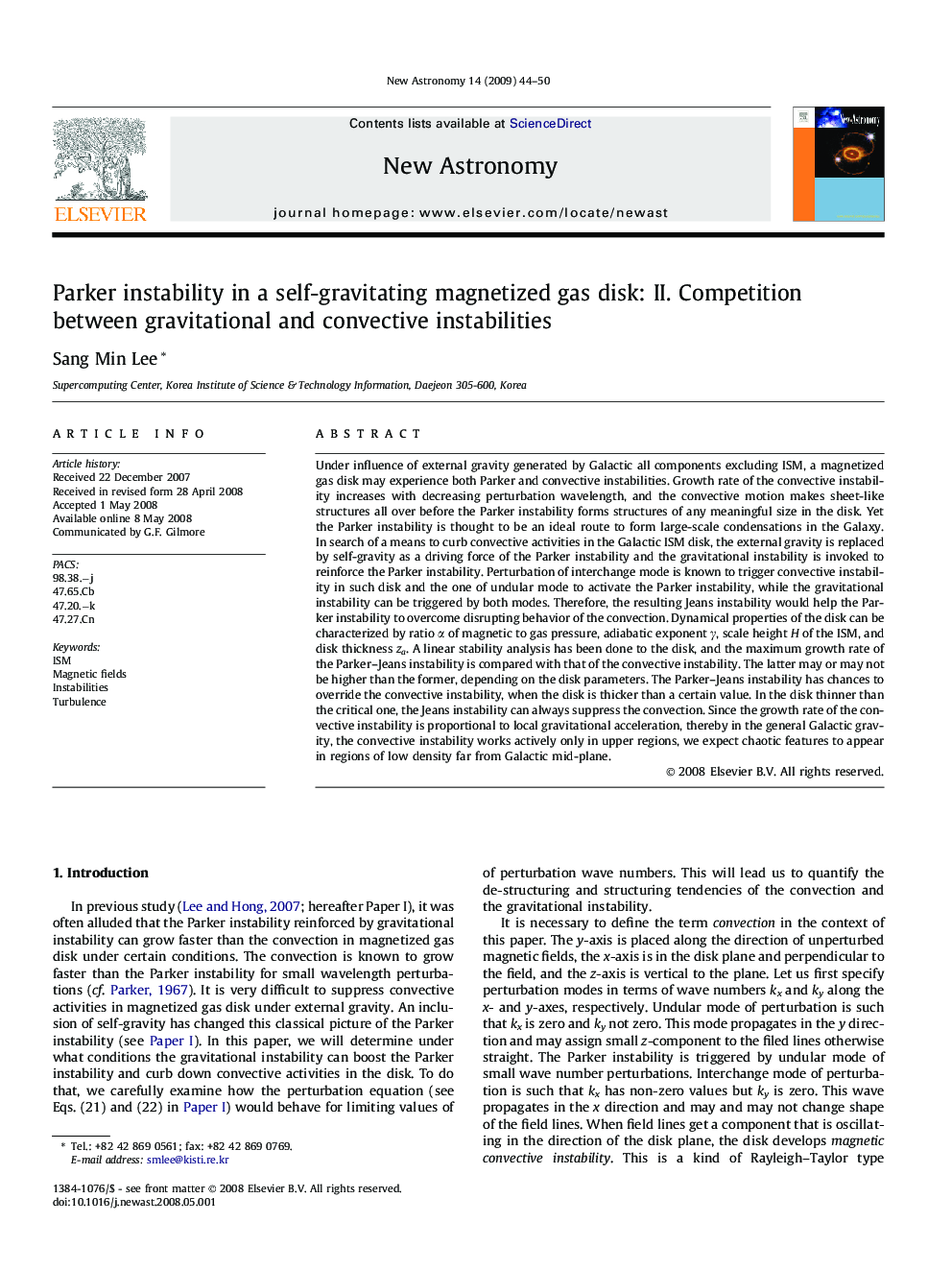| Article ID | Journal | Published Year | Pages | File Type |
|---|---|---|---|---|
| 1779228 | New Astronomy | 2009 | 7 Pages |
Under influence of external gravity generated by Galactic all components excluding ISM, a magnetized gas disk may experience both Parker and convective instabilities. Growth rate of the convective instability increases with decreasing perturbation wavelength, and the convective motion makes sheet-like structures all over before the Parker instability forms structures of any meaningful size in the disk. Yet the Parker instability is thought to be an ideal route to form large-scale condensations in the Galaxy. In search of a means to curb convective activities in the Galactic ISM disk, the external gravity is replaced by self-gravity as a driving force of the Parker instability and the gravitational instability is invoked to reinforce the Parker instability. Perturbation of interchange mode is known to trigger convective instability in such disk and the one of undular mode to activate the Parker instability, while the gravitational instability can be triggered by both modes. Therefore, the resulting Jeans instability would help the Parker instability to overcome disrupting behavior of the convection. Dynamical properties of the disk can be characterized by ratio α of magnetic to gas pressure, adiabatic exponent γ, scale height H of the ISM, and disk thickness za. A linear stability analysis has been done to the disk, and the maximum growth rate of the Parker–Jeans instability is compared with that of the convective instability. The latter may or may not be higher than the former, depending on the disk parameters. The Parker–Jeans instability has chances to override the convective instability, when the disk is thicker than a certain value. In the disk thinner than the critical one, the Jeans instability can always suppress the convection. Since the growth rate of the convective instability is proportional to local gravitational acceleration, thereby in the general Galactic gravity, the convective instability works actively only in upper regions, we expect chaotic features to appear in regions of low density far from Galactic mid-plane.
